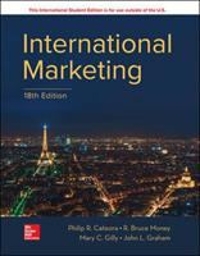Please provide clear solutions for each of the following
3. Static One Period Model of the Economy: Consider a static, one-period model of the economy. There is a representative household who can choose how much to consume and how much to work. There is no saving since the model is static. The household problem is max U = In C - ON?|s.t. C = uN+ D. C.N I have dropped the t subscripts since there is only one period. Here N is hours of labor, C is consumption, D is a dividend received from ownership of the firm, and w is the real wage. The parameter 0 governs the disutility from working. Higher values of 0 make the household want to work less. You could also think about & as corresponding to the utility from leisure, since if you are not working we treat that as leisure. A firm produces according to the following production technology Y = AN.. This is different than the production function in class. Here only labor is used (no capital) and there are no diminishing returns to labor. We can still analyze the problem with F(K, N) = N, but the conclusions may be different. The firm's dividend is D = Y - WN.The firm's objective is to pick N to maximize D: max AN - wN. N (a) Use the household (flow) budget constraint to substitute out for C in the utility function. Then use calculus to derive a first order condition characterizing optimal behavior for the household. (b) Solve this equation for N in terms of objects that the household treats as given. These may be exogenous or endogenous but treated as fixed by the household. (c) Use calculus to derive a first order condition characterizing optimal behavior by the firm. (d) If the first order condition does not include N, it means the firm is willing to choose any value for / so long as the first order condition is satisfied. Given your answer to (c), what will be true about D in equilibrium. (e) Given previous answers, derive the aggregate resource constraint.B6 An investigation was undertaken into the mortality of male term assurance policyholders for a large life insurance company. The crude testedity graduated using a formula of the form: 4 x=0 +Be"x An extract of the results is shown below. Age Exposure Crude Graduated Standardised (years) mortality rate mortality rate deviation Ex 4x - 4x X Ex Z= Ex 9x 1-qx 40 11,037 0. 0029 0.00348 - 1.035 41 12,010 0.00333 0.00358 -0.459 42 11,654 0.003 0.00368 -1.212 43 9, 658 0.003 0.00379 -1.264 44 8, 457 0.00319 0.00391 -1.061 45 10,541 0.00427 0.00402 0. 406 46 7,410 0.00472 0.00415 0.763 47 12,042 0.00399 0.00428 -0.487 14,038 0.00406 0.00441 -0.626 49 11,479 0. 00375 0.00455 -1.274 50 12,480 0.00409 0.00469 -0.981 51 10,567 0.00407 0.00485 -1. 154 52 9, 187 0.00512 0.00500 0.163 53 14,027 0.00456 0.00517 -1.007 54 11,581 0.00466 0.00534 - 1.004 (i) Test the graduation for goodness of fit usingtheodd test. [5] (a) By inspection of the data, suggest one aspect of the graduated rates where adherence to data seems inadequate. (b) Explain why this may not be detected by speeded test. (c) Carry out one other test that may detect this deficiency. [5] (iii) Suggest how the graduation could be adjusted to correct the deficiency identified. [2] [Total 12]









